Any drywall finisher in highly humid climates like the one you’ll find in Ponte Vedra Beach, Fla., knows you have one beastly enemy you need to conquer: moisture.
How Fast Edge® Paper Conquered Cracking in Coastal Custom Home

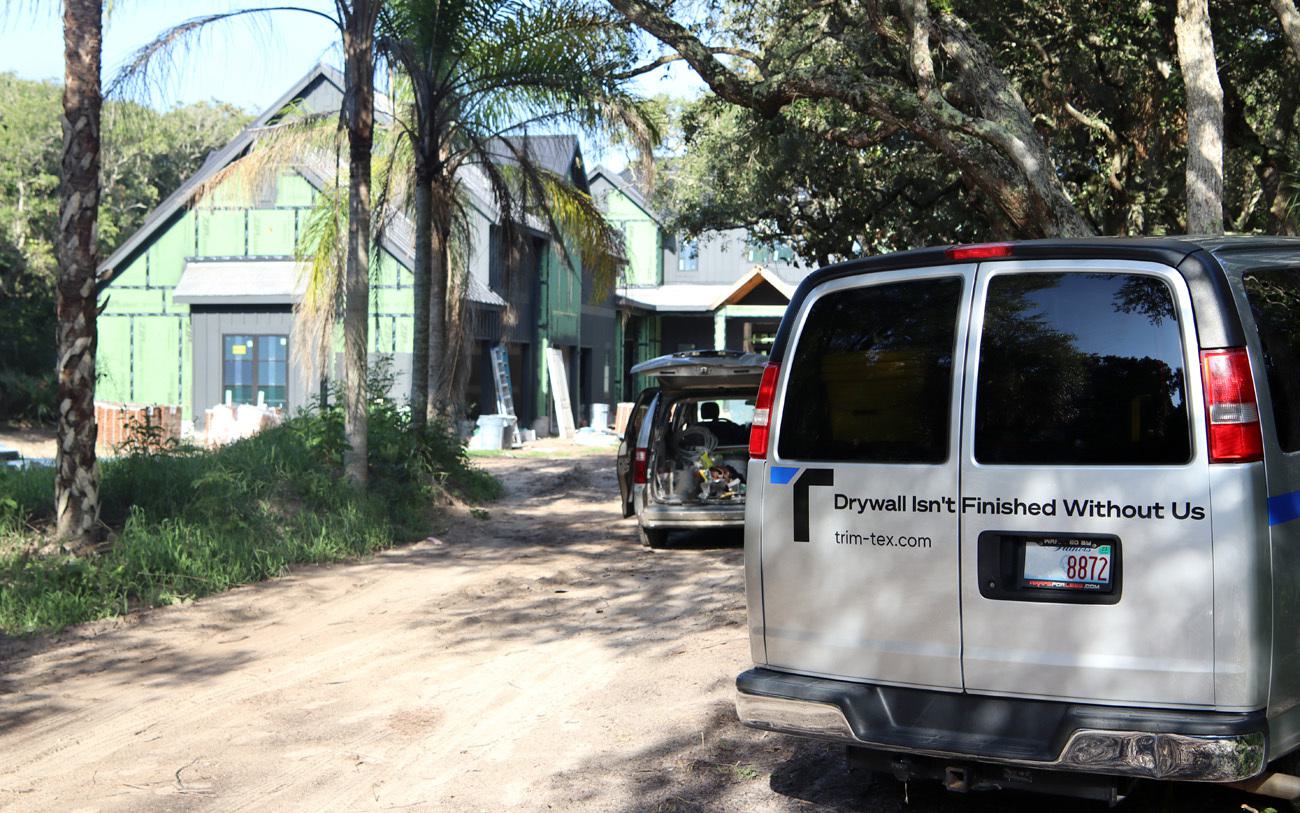
For properties like this upscale custom home from Coastal Oaks Construction — nestled between the ocean and the Guana River, just outside Jacksonville — summertime moisture is the number-one cause of cracks in the compound of finished drywall (as well as damaging other areas, like warping cabinets). And it doesn’t always take years for cracks to form; workers on this jobsite told us about nearby home builds they’ve seen where nearly every drywall corner cracked mere moments after the air conditioning turned on for the first time. And if you use metal corner bead in a house like this, your corners are very likely to rust, sometimes before you’ve even finished your work.
Clay Drywall, the drywall contractor behind this home, is no stranger to facing down the enemy of moisture. In business since 1971, hanging and finishing drywall for northeast Florida homes from Amelia Island to Gainesville, they spent years searching for a sure-fire killer of corner cracks from moisture, trying out practically every bead on the market. They started using paper-faced beads many years ago, but in 2019, when Trim-Tex rolled out Fast Edge® Paper, Clay Drywall found their best weapon against humidity — a corner bead, made from a vinyl core covered with laminated paper, that won’t rust, won’t cause cracks and holds its shape after even extreme impact.
“We use [Fast Edge Paper] in everything, up to about 500 houses a year,” says Clay Drywall President James Chapman. “We use it in 99 percent of our homes. Trim-Tex, the products they manufacture now are so much farther superior than anything that was on the market, even just a couple years ago. We've used them all. We have the best performance out of the Trim-Tex products on the Fast Edge. It makes nice, sharp, crisp angles. It uses less material, and the biggest thing of it is, for 20-something years of using these products, we have never went back and ever fixed a piece of corner bead. That is a huge thing. When you eliminate 80 percent of all your warranty claims by eliminating crap corner bead, it's a huge deal.”
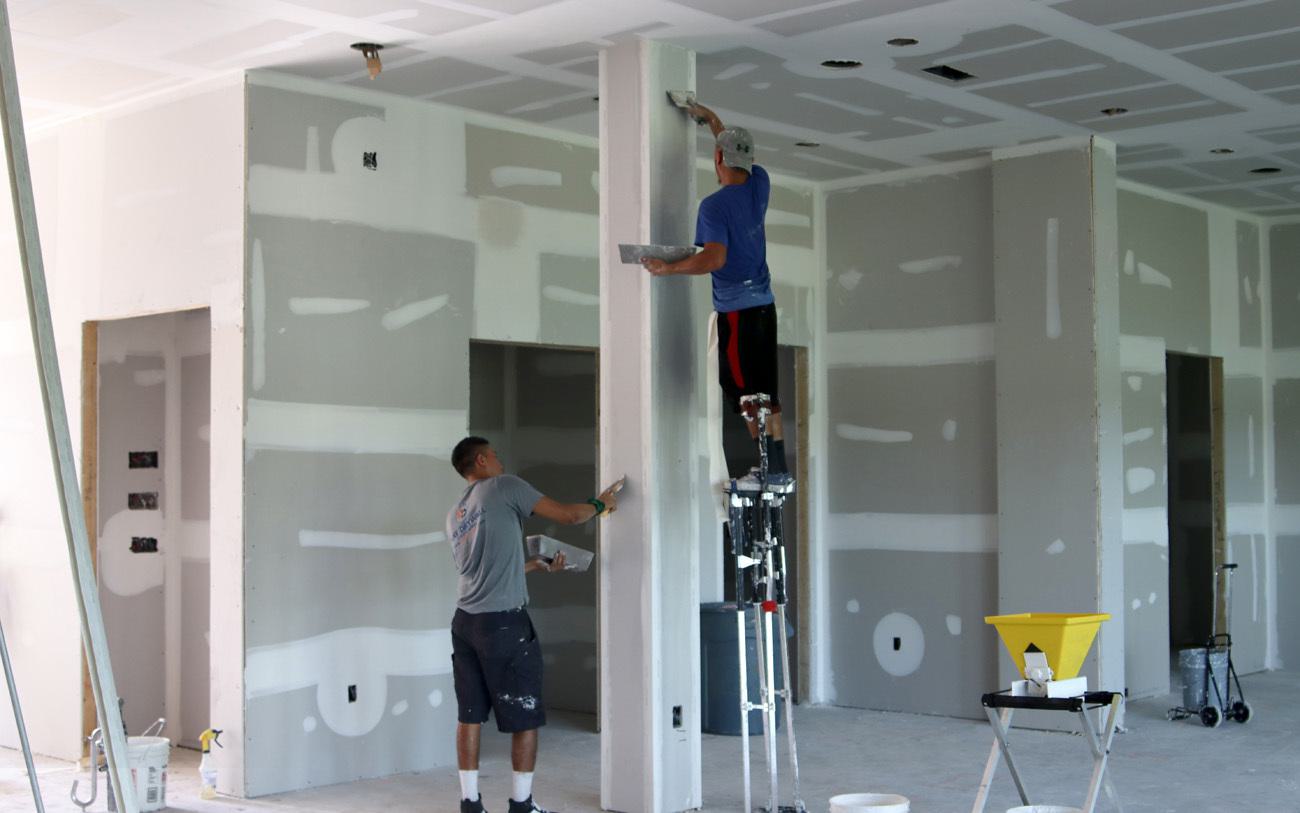
‘ONCE THEY FIGURE OUT THIS MATERIAL IS ACTUALLY FASTER, THEY BUY INTO IT’
This custom home, which used about 50,000 square feet of drywall board, features ultra-high ceilings. So, to reach these heights, the finishers at Clay Drywall used 12-foot lengths of Fast Edge Paper, running the bead through a mud-filled hopper before applying it to the corners (this bead only requires mud to form its powerful bond to the drywall — no adhesives or staples required).
With one finisher blading the beads toward the floors and another finisher on tall stilts working toward the ceilings, the pair worked quickly and cleanly from one corner to the next. They would pass a roller, engineered specifically for Fast Edge Paper, between them to evenly apply pressure along the enter 12-foot length of the bead. They would then use a joint knife to wipe the excess mud down the laminated paper legs. This way, both the vinyl core of the bead — which uses patented mud locks to function as hooks that dig into the compound — and the paper have been adhered to the wall surface for an unbeatable, highly durable bond.
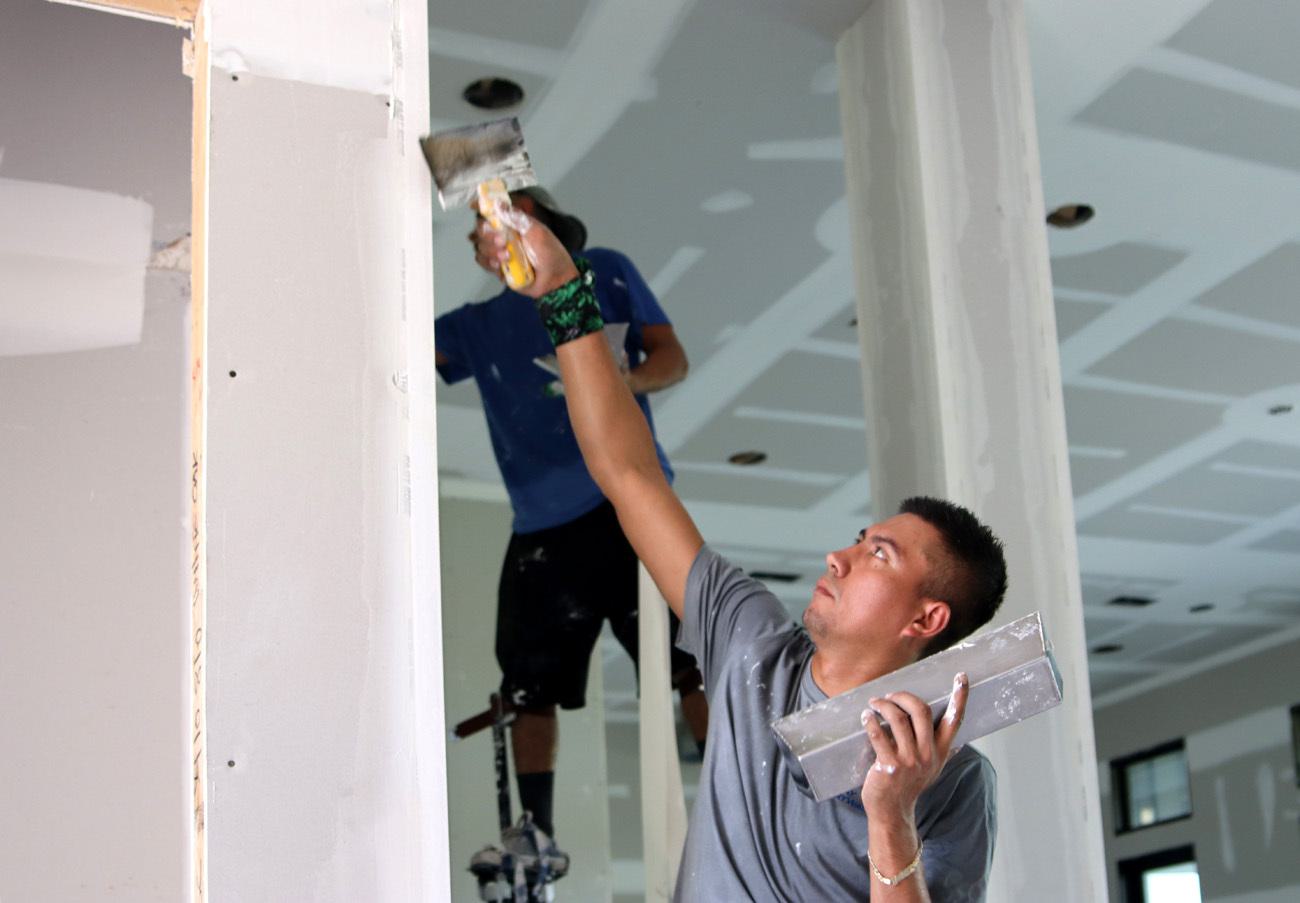
Once he discovered this faster, easier and crack-resistant system, James’ biggest hurdle was getting his crews on board with a new way of doing things; after all, many tradespeople can be resistant to change. But, he says, once his finishers see for themselves that they can move more quickly with this kind of corner bead, they won’t look back.
“Everybody, they're standoffish at first,” James told us. “Nobody wants to use it. They wanted to staple metal corner bead on. Once they figure out this material is actually faster, they buy into it, but the thing is trying to get the guys to buy into it originally. All my finishers, they all are bought into it. We don't put metal corner bead on anything. I think out of 556 jobs we did last year, I think we did two jobs with metal corner bead. How I normally get them to buy in is, I go to the job, and show them how to use the material — because they get paid by the board. They don't get paid by the hour. Once they figure out that this is quicker; they use less material; they're not moving heavy material around; that you can get it in 12-foot lengths like what we did here today; it's readily available; it makes an easier job for them; they're good with it.”
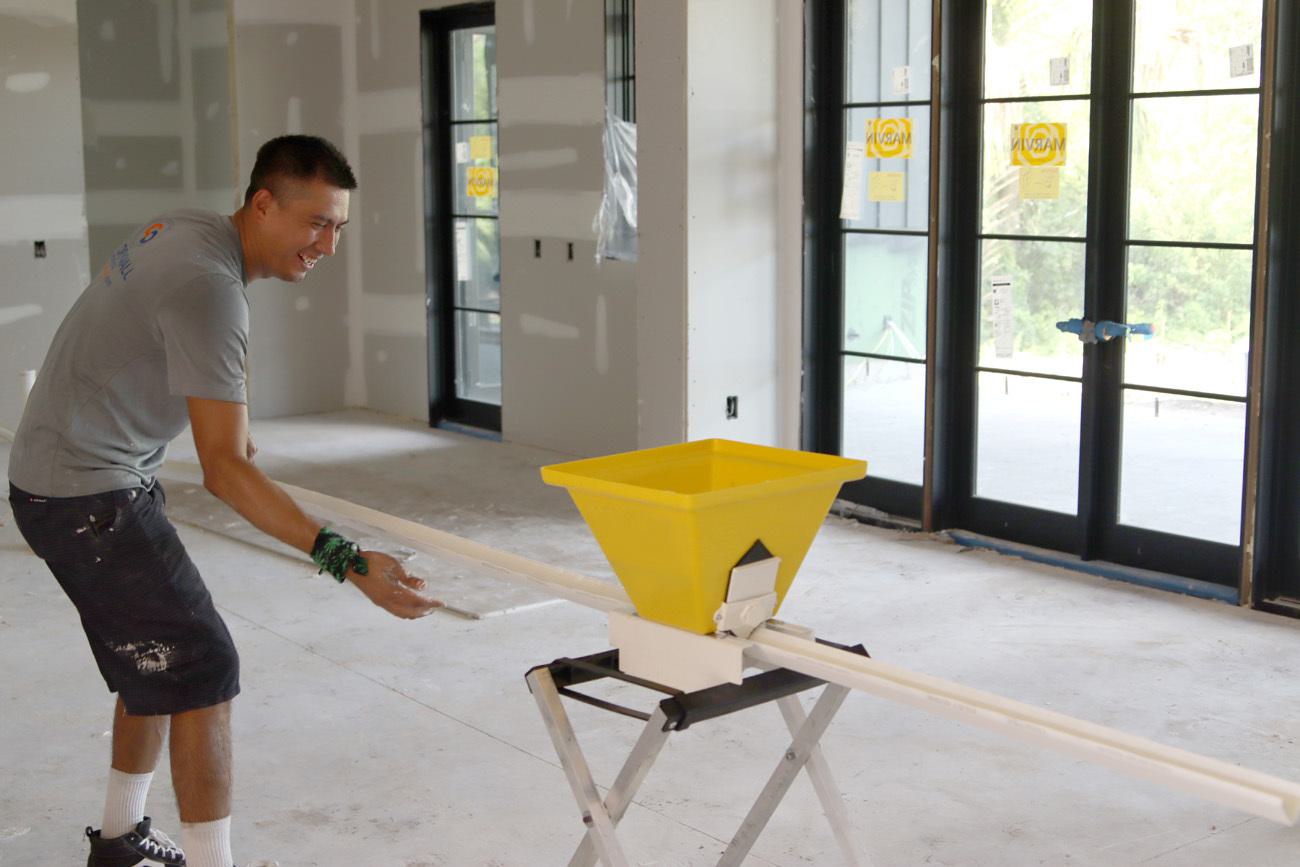
‘THIS DAMAGE WOULD NORMALLY BE A HUNDRED TIMES GREATER THAN WHAT IT WAS’
James and Clay Drywall aren’t just thinking about the short-term speed advantages for their crews — they’re thinking about how their work will hold up for years to come for their clients. And that’s where the durability of Fast Edge Paper really makes a huge difference. For a home like this one, which is likely to sell for as high as $6 million, a premium home needs to stay looking pristine for the long haul.
To illustrate why this corner bead aligns with his way of thinking about the long-term condition of his work, James shares with us a story:
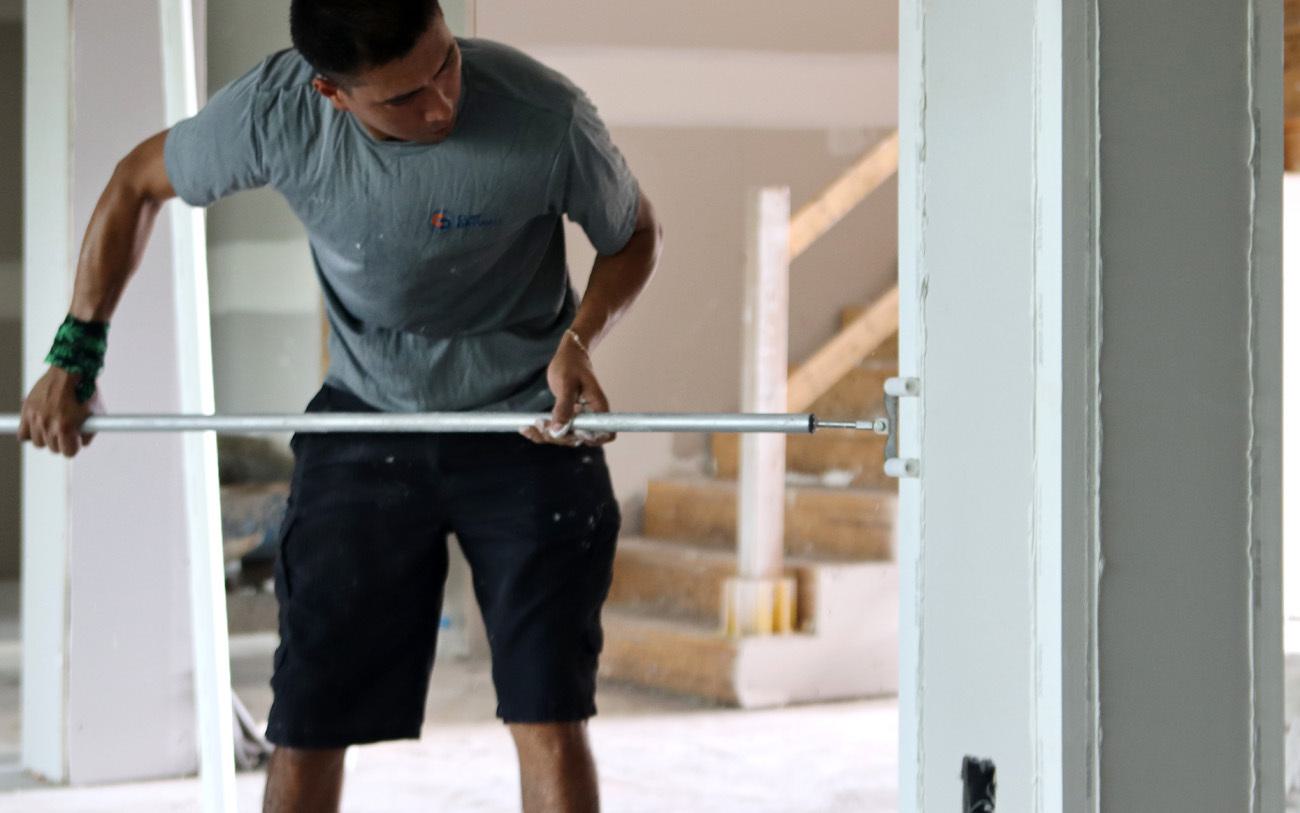
“One of my builders was moving into his new house that we had just did — his personal house — and he built about 30 or 40 houses a year and he never wanted to use [Fast Edge Paper]. He never wanted to use it, because it was a few hundred dollars more per house. He calls me on a Saturday, and he never called me on a Saturday. I get a phone call. I see it's him and I'm like, ‘Hey, what's going on?’ He's like, ‘Hey man, what is the corner bead that you used in my personal house?’ I'm like, ‘It's Trim-Tex Fast Edge.’ He goes, ‘Well, I got to tell you a quick story. We were moving in a giant 400-pound credenza and the movers were pushing it on dollies and they ran into the corner full-speed. I'm [expecting] all that corner bead's going to be knocked completely off, and I've been in the building trade for 30-something years. The movers were astounded — it just barely chipped the edge. They were like, “We've never seen this. What is this stuff? What is this product you have in your house, because normally we run into this and it snatches the corner bead off the wall.”’
“From that point forward, we have used paper-faced Fast Edge in all of his production homes. It was that one little selling point: this damage would normally be a hundred times greater than what it was. It was just a little tiny nick and it tore the edge of the bead. But if that was a metal corner bead, it would snatch it off the wall. It would've been a crack of five or six feet and we would have to replace the corner bead. That story is a true testament on the product itself.”
When you’re working in drywall finishing, especially in an environment like the one in Ponte Vedra Beach — where your corners are vulnerable to everything from cracks to rust to good-old-fashioned runaway credenzas — if you settle for flimsier corner bead, in the end, are you really saving any money? If you need to come back to the jobsite to fix all kinds of drywall cracks and rip out rusted metal from the walls, is that worth your time and material?

“I always tell people always the same thing,” James says. “A ’57 Chevy is a great car, okay? Metal corner bead was a good product. But this paper-faced corner bead is a 2022 Cadillac. Why use 1950s technology in a house that you're buildings in 2022 that's a multimillion-dollar home? Why even use it in a smaller house?”
Thank you to James and the whole crew at Clay Drywall for allowing us to come observe their expert process one blisteringly hot morning this past summer. If you’re in northern Florida and need top-notch drywall work, do yourself a favor and hire them — you can learn more about Clay Drywall and contact them on their website.
To get a better look at the “2022 Cadillac” of corner bead, Fast Edge Paper, for yourself, request a free sample below!

Fast Edge® Paper: The Callback Killer
Experience the difference — request your Fast Edge® Paper sample today
Request A Sample